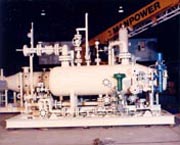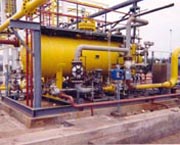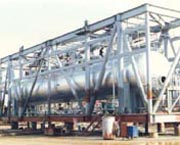Coalescer Packs
Mackenzie Hydrocarbons (MKZ) offers a range of coalescer packs for the oil and gas industry. Coalescers packs, constructed as corrugated plate interceptors (CPS), are effective in separating emulsions of immiscible liquids. They are particularly suited for breaking emulsions. In projects upgrading existing facilities, improved separator efficiencies and decreased emulsifier chemical consumption can be achieved by the installation of CPI packs. This improves the quality of effluent streams and saves money.Alternatively coalescers can be installed to minimise the size of vessels with no reduction in the oil BS&W.In the treatment of oily wastes, coalescer packs can offer performances of down to 10ppm oil-in-water under favourable conditions.
Other Alternatives
MKZ experience is that coalescer packs are satisfactory for most oil/water separation requirements. A more sophisticated but more expensive form of mechanical coalescing for hard to break emulsions and crude with foaming characteristics is to use structured packing.
Structured packing is also appropriate for FPSO installations where surge and sway are determining motions.
Another option is to use patented oleophilic packs manufactured in sine wave configuration which can get below 10ppm oil-in-water limits. Oleophilic packs, tend to be expensive and are only cost effective in smaller size applications such as “polishing up” the effluent water to reduce the oil level from 30ppm to 10ppm.
Induced air flotation is further technique employed by the company to produce 20ppm or low oil content of effluent water.
It is also quite possible to use our electrostatic treating technology to remove oil from the water (instead of the conventional design of removing water from the oil). This could be attractive if bulk removal of the oil is required. Chemical treating may also be useful, mostly as an assist process to the coalescer packs.
Oily-Water Treating
This is the classic application for coalescer packs.
Vessel Configuration
This process requires horizontal vessels but we have worked on vertical vessels, mostly in the small flowrate regime.



